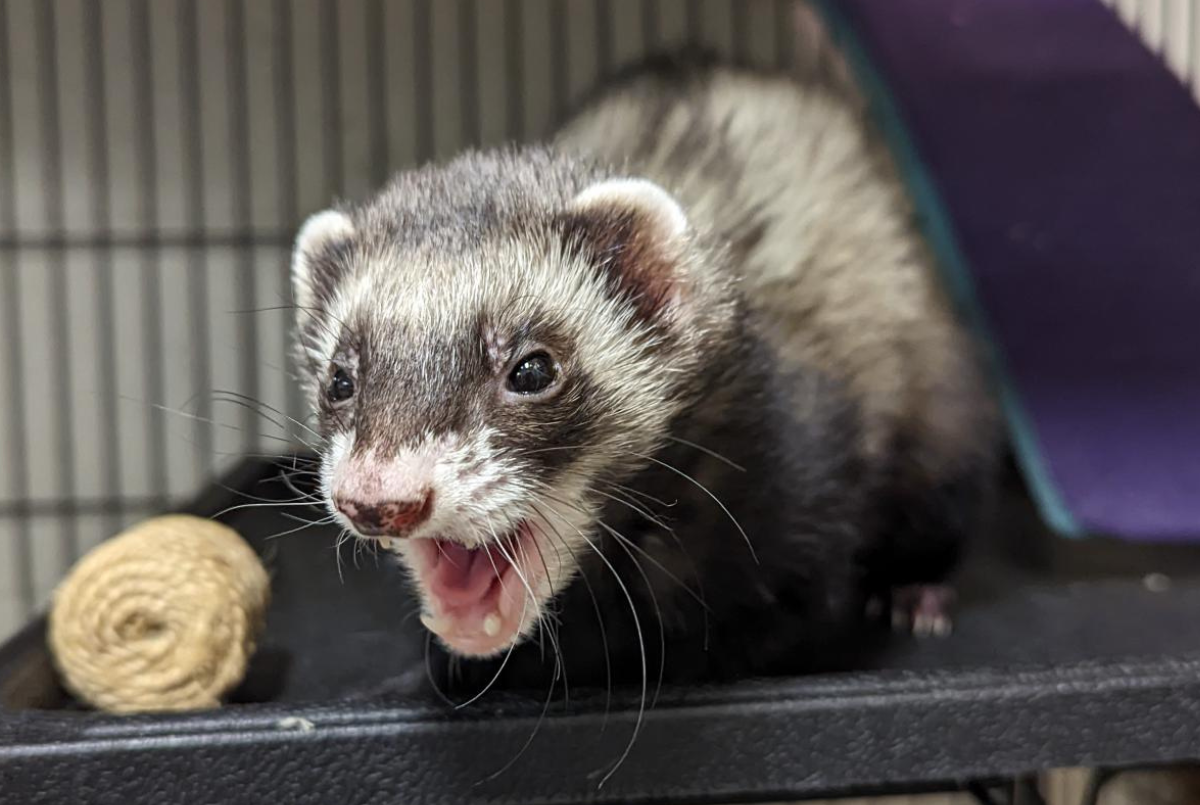European Ferret

Basic Information:
Scientific Name: Mustela furo
Habitat: Ferrets are native to the forested habitats across Europe.
Diet: In the wild ferrets eat a mostly carnivorous diet of other small mammals, such as rabbits, opossums, hedgehogs and rodents. They also eat birds, bird eggs, reptiles, fish, amphibians and invertebrates. Wild ferrets may also eat carrion.
Size: 1.4 to 1.8 feet long
Weight: 1 to 4 pounds
Lifespan: 5 to 7 years in the wild. Up to 10 years in human care.
Distribution Map:
I.U.C.N. Conservation Status:

What does this mean?
Least Concern – a species determined by the International Union for Conservation of Nature (I.U.C.N.) to be pervasive, abundant, and thriving.
About Ferrets:
Getting their name from the Latin word furittus meaning “little thief,” Ferrets are known for being troublemakers. While they may sleep 14-18 hours each day, when they are awake they are quite energetic. They use their long, wiry body to squeeze into the smallest and most maze-like of spaces. They are primarily a domestic species with some feral populations existing in some areas. The original reason for domestication is not fully known, but it is generally concluded to have been for hunting purposes. They are useful for zipping into another animal’s burrow and chasing it out the other side into patiently waiting human hunters. Outside of this, ferrets are known for being very playful animals who love to run, explore, and interact with anything they can find.
Did You Know?!
- Ferrets are part of the Mustelidae family which also includes skunks and badgers. One characteristic that they all share is that they all have glands that produce very strong odors when alarmed, surprised, or scared.
- Ferrets have – in general – very poor eyesight. That being said, their nearsightedness is very strong and – in many ways – better than a lot of other animals. In other words, they are capable of seeing very clearly a few feet in front of them, but not much beyond that. This is very useful for ferrets as they maneuver the tight and confined burrows of their prey.
- A ferret’s long flexible spine allows them to maneuver in tight spots and help them chase their prey down tight holes.
- Throughout the Age of Discovery (1400 CE – 1700 CE), sailors kept ferrets on ships to control rodent populations. It is thought that this led to their introduction into the USA in the 1700s (the black-footed ferret).
- Ferrets are known to perform “war dances” when they are excited. This excitable bouncing typically happens when a ferret is playing and having fun. It is thought to have originated from a wild weasel’s method of confusing and disorienting their prey.
